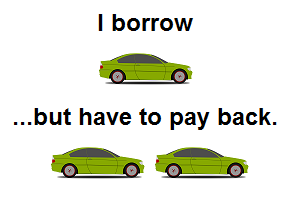Negative Interest Rates Unpopular
With the European Central Bank (ECB) getting ready to take center stage Thursday, the concept of negative interest rates has many investors scratching their heads from an economic benefit perspective. From The Wall Street Journal:
Banks and insurers don’t like it, borrowers are seeing little or no benefit from it and savers and pensioners fear their money is being eaten away by it: The policy of negative interest rates is as unpopular as it is mysterious. The European Central Bank looks likely to cut rates further into negative territory this week and yet no-one really knows exactly how it is supposed to help.
In this article, we will explore the following question:
Why are governments considering negative interest rates, given the many negative ramifications?
An Extreme Example To Illustrate Concepts
Looking at simplified and extreme examples can help us understand economic concepts. Assume I borrow $30,000 from you interest-free to buy a car. The terms of the loan are for repayment to be made in a lump sum five years from the date of the loan. I borrow $30,000 and pay $30,000 back five years later.
If prices for cars remain constant over the five-year period, I end up paying you back for the value of one car. However, if car prices drop by 50% over the five-year period, what was previously a ,000 car will now retail for ,000. Therefore, as a borrower, I will have to repay the value of two cars instead of the value of one car. Said another way, deflation makes my debt burden increase in purchasing power terms.
Debt Needs To Be Inflated Away
The same concepts of “purchasing power burden” apply to government debt, or any debt for that matter. Deflation is a nightmare for those carrying a lot of debt. From The Wall Street Journal:
Inflation is a vital part of the effort to reduce the heavy burden of debt in European economies. This applies most obviously to the strained government finances of southern Europe, which are vulnerable to another downturn, but also relatively high private-sector borrowing in countries including France, Belgium and the Netherlands… Low inflation, particularly if it proves persistent, means that debt burdens aren’t being eroded as borrowers might have expected. That can force them to devote greater resources to deleveraging, hampering growth.
Consumer Debt Also Worrisome
U.S. consumers have been consuming, but with the assistance of plastic. From The Street:
Consumers have been racking up credit card debt at a pace not seen since the period leading up to the 2008 credit market collapse. And that has experts worried. “This is a huge red flag,” said Odysseas Papadimitriou, chief executive of CardHub, a credit card comparison and personal finance company. Americans appear to be spending like it’s 2007 as they charged up .9 billion in new debt on their credit cards in 2015, according to CardHub’s 2015 Credit Card Debt Study, released this week. The lion’s share came in the fourth quarter, when consumers charged up $52.4 billion in new debt.







